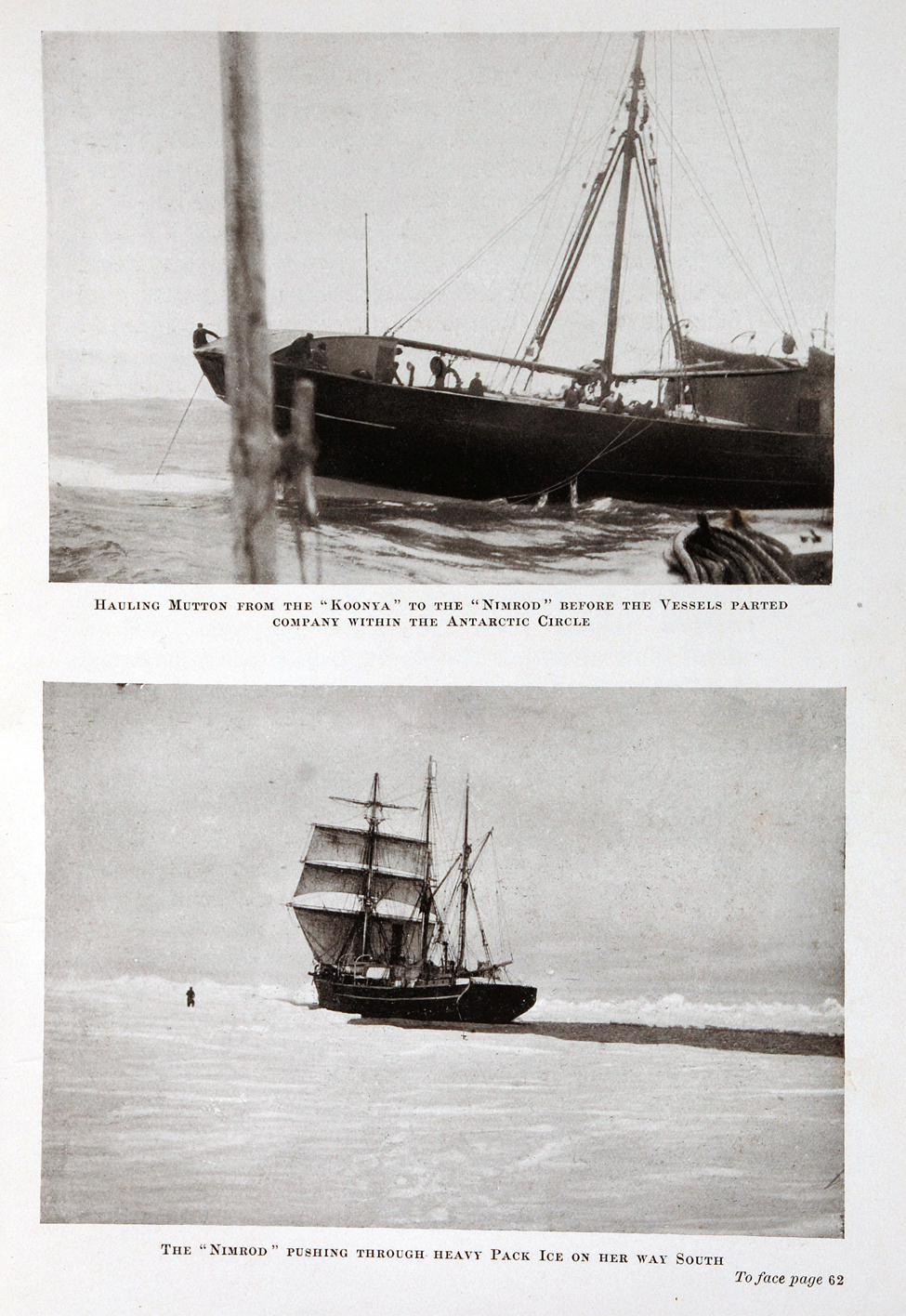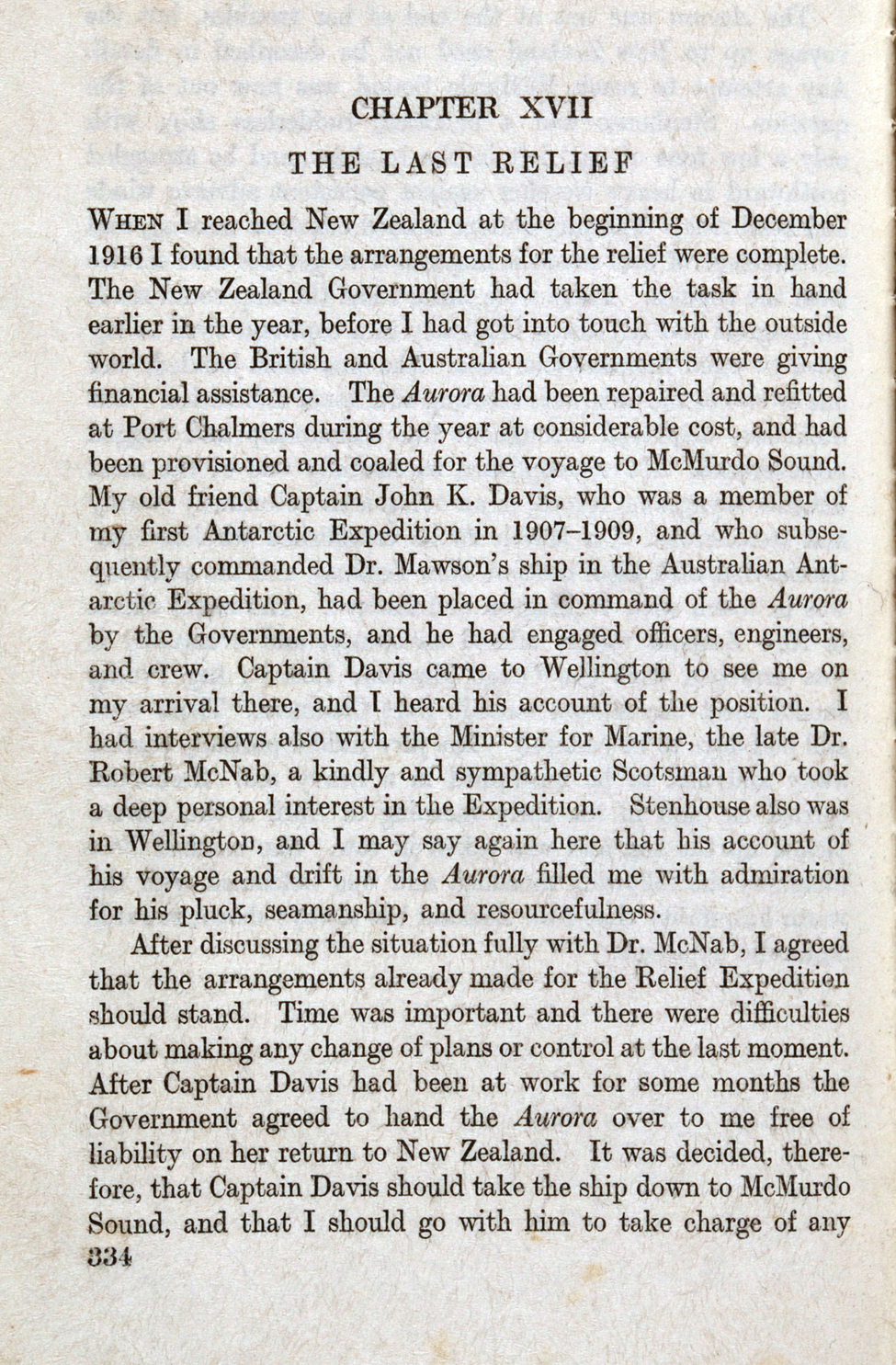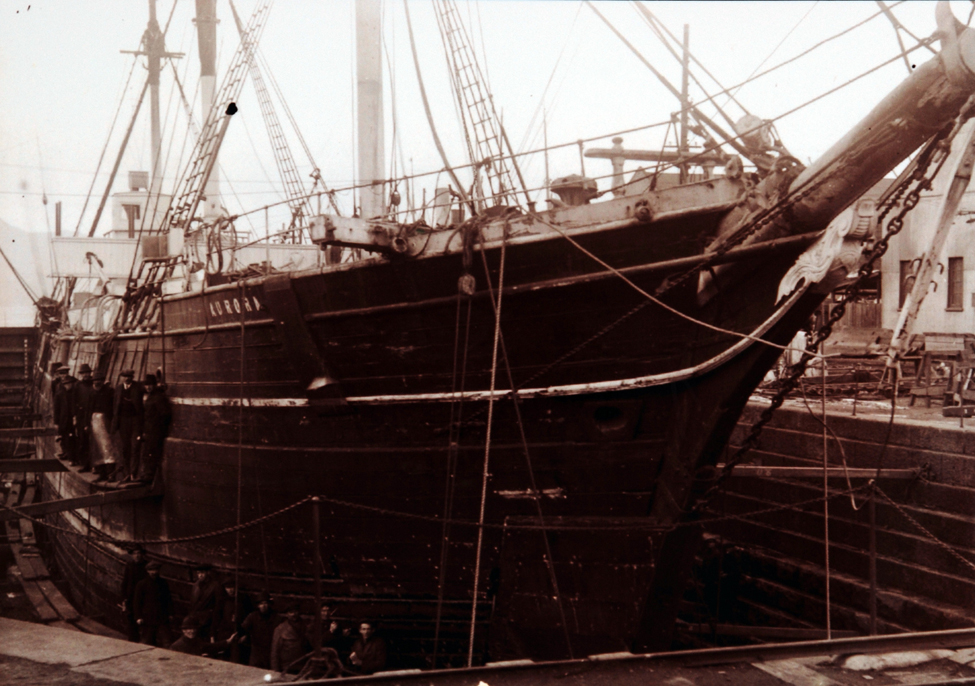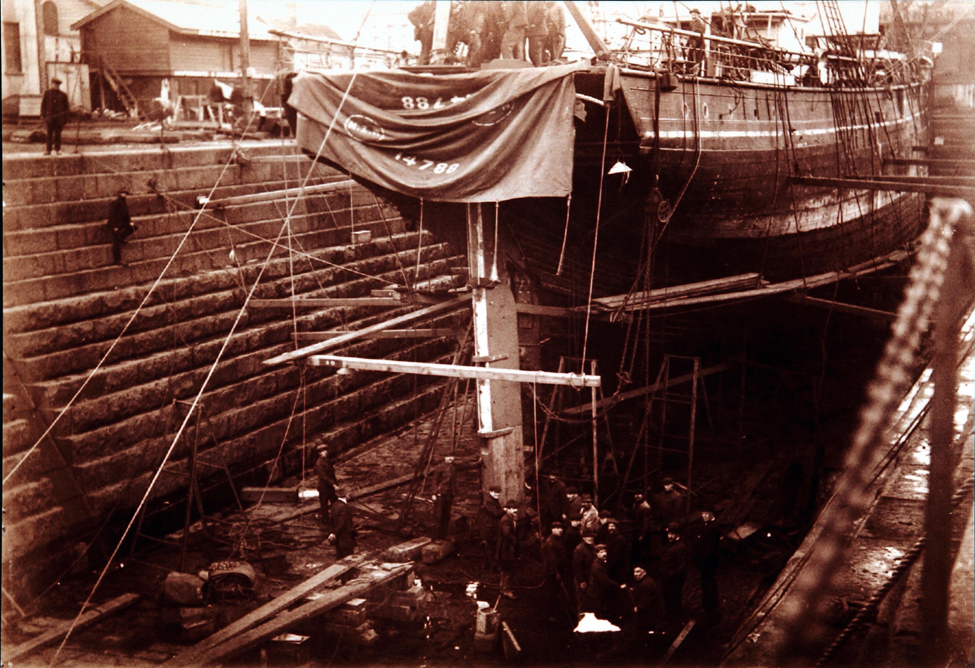Case 11
- Sir Ernest Shackleton

Ernest Shackleton. The Heart of the Antarctic; Being the Story of the British Antarctic Expedition 1907–1909. London: William Heinemann, 1909. Two volumes, volume one on display.
Ernest Shackleton (1874–1922) was another principal figure in the Heroic Age of Antarctic Exploration. Having served with Scott during the Discovery Expedition, Shackleton was keen to make his own mark as an Antarctic explorer. In 1907, the British Antarctic Expedition commanded by Shackleton sailed from Lyttelton aboard the Nimrod with the aim of reaching the South Pole.
It was decided, due to the amount of supplies aboard ship, that the Nimrod would be towed near to the pack ice rather than make way under its own power. The tramp steamer Koonya was offered by Sir James Mills of the Dunedin-based Union Steam Ship Co. to undertake the task. Mills also paid for half the cost of the towing operation. Though Shackleton did not reach the South Pole, the mission’s other successes earned him a knighthood.
This copy of Heart of the Antarctic belonged to Robert McNab (1864–1917), who donated his collection of 4,200 books to the Dunedin Public Library in December 1913. Tipped in at the front of volume one is a letter from Shackleton to McNab, thanking him for the copy of Double Investigation of the Southern Polar Ocean by the Russian explorer Fabian von Bellingshausen (1778–1852). The letter was written aboard the Nimrod and is dated 20 January 1908.

Ernest Shackleton. The Heart of the Antarctic; Being the Story of the British Antarctic Expedition 1907–1909. London: William Heinemann, 1909. Two volumes, volume one on display.
Open image in new window

Ernest Shackleton. South: The Story of Shackleton’s Last Expedition 1914–1917. London: William Heinemann, 1919.
In August 1914, Shackleton embarked on his Imperial Trans-Antarctic Expedition, which aimed to cross the Antarctic Continent from the Weddell Sea to the Ross Sea. The Weddell Sea party, led by Shackleton, was transported by the Endurance. The steam yacht Aurora carried the Ross Sea party. It was a disaster. In January 1915, the Endurance was frozen fast in an ice floe and had to be abandoned. It was crushed by the ice and sank in October.
Five months earlier, in May, the Aurora broke from its moorings in McMurdo Sound during a gale. The ship and most of its crew became trapped in the ice and carried miles out to sea, where it drifted for 312 days. Pressure from the ice was so great it damaged the rudder beyond repair. The Aurora finally escaped the ice in February 1916. By mid-March, it was free of the Antarctic’s icy waters. Its coal supply was enough for only eight days travel and the damage to its jury rudder meant the ship could hardly manoeuvre.

Ernest Shackleton. South: The Story of Shackleton’s Last Expedition 1914–1917. London: William Heinemann, 1919.
Open image in new window

Photograph (copy). The crew aboard the Aurora while in Port Chalmers, 1916.
When word of the stricken Aurora reached the Otago Harbour Board, the tug Dunedin was dispatched to assist. The Dunedin reached the damaged ship on 2 April and guided the Aurora safely to Port Chalmers where it was repaired and refitted. In December, a very grateful Shackleton arrived in Dunedin. He thanked everyone for the sympathy and kindness extended to the crew of the Aurora from ‘the moment she limped in, a lame duck, at Port Chalmers’ (Church 38).
Ian Church. Last Port to Antarctica: Dunedin and Port Chalmers: 100 years of Polar Service. Dunedin: Otago Heritage Books, 1997.
Photograph reproduced courtesy of Port Otago Ltd.

Photographs (copies). The Aurora in the Port Chalmers dock. Photographer: David Alexander De Maus, 14 September 1916; one of two.

Photographs (copies). The Aurora in the Port Chalmers dock. Photographer: David Alexander De Maus, 14 September 1916; one of two.
Open image in new window

Photographs (copies). The Aurora in the Port Chalmers dock. Photographer: David Alexander De Maus, 14 September 1916; two of two.
Both photographs reproduced courtesy of Port Otago Ltd.

Photographs (copies). The Aurora in the Port Chalmers dock. Photographer: David Alexander De Maus, 14 September 1916; two of two.
Open image in new window

Photograph (framed). ‘Dr Robert McNab and Sir Ernest Shackleton. Departure of the “Aurora” for Ross Sea on her Relief Expedition, December 20th 1916’.

Photograph (framed). ‘Dr Robert McNab and Sir Ernest Shackleton. Departure of the “Aurora” for Ross Sea on her Relief Expedition, December 20th 1916’.
Open image in new window






